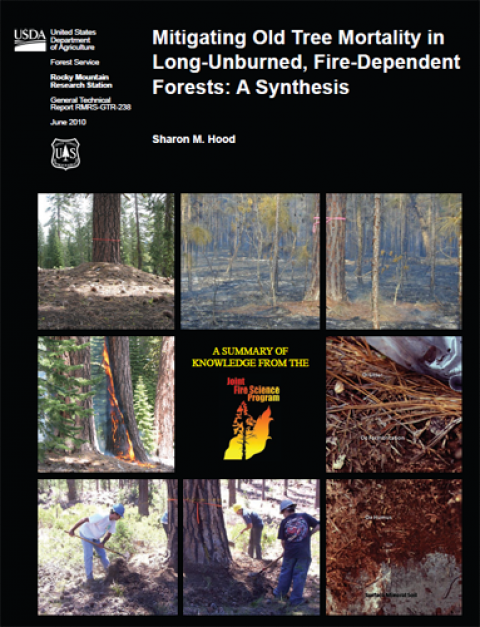Mitigating old tree mortality in long-unburned, fire-dependent forests
Forest managers around the country have expressed concerns about large-diameter and old tree mortality when prescribed burning in long-unburned forests. This project developed a synthesis that provides recommendations for maintaining and perpetuating old trees in fire-dependent ecosystems. It synthesizes the literature and current state of knowledge pertaining to reintroducing fire in stands where it has been excluded for long periods and the impact of these introductory fires on overstory tree injury and mortality.
Litter and duff accumulation around large-diameter trees has reached unprecedented levels in many areas as a result of 100+ years of fire exclusion. Several studies have attributed large-diameter tree mortality to basal injury caused by smoldering in abnormally deep duff accumulations after extended fire-free periods in fire-dependent ecosystems. Even with mechanical thinning to reduce ladder fuels and thus, the likelihood of crown injury, deep duff mounds remain, as does the potential for stem and root injury. Because flames are not typically associated with smoldering duff, forest floor consumption after the flaming front passes draws little attention, and its consequences are easily overlooked. However, burning in areas with deep basal duff around trees may result in greater duff consumption and higher soil temperatures than trees subject to periodic low-intensity fires with shallower basal duff.
This synthesis is organized into seven sections: (1) Fire Impacts on Trees and Causes of Tree Death; (2) Properties of Soil and Duff; (3) Historical and Current Fire Frequencies and Stand Characteristics; (4) Treatment Effects on Old Tree Resilience; (5) Management Options; (6) Monitoring the Effects of Fire on Overstory Tree Mortality; and (7) Knowledge Gaps. The first two sections provide a background for fire-related tree injury and ground fuels in fire-excluded stands. The third section contrasts historical and current stand conditions and disturbance regimes for fire-dependent forest types. The fourth and fifth sections provide information on treatment options at various scales based on pertinent studies and makes general treatment recommendations by forest type. Management Options also discusses defining treatment objectives, treatment prioritization, no action, and monitoring techniques. Differences between stand and individual tree monitoring, what variables to monitor, and appropriate monitoring time lengths are discussed in the Monitoring section. The last section identifies gaps in the scientific literature and recommends topics for future research.
